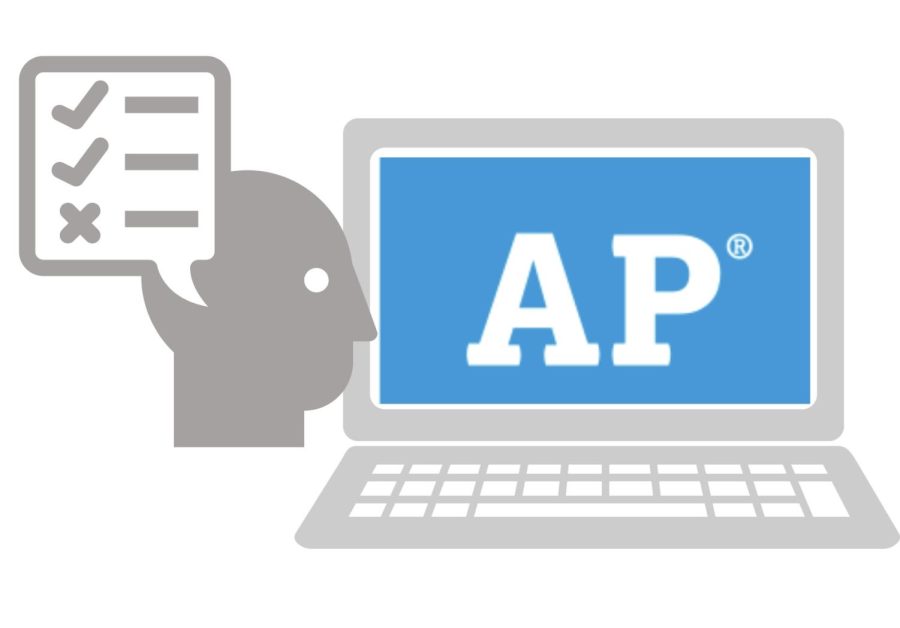As the 2022-23 school year comes to an end, many students and teachers involved in AP courses just finished partaking in the highly anticipated final exams. These AP exams measure a student’s knowledge over the semester or a full year in one sitting. The weight of these exams puts immense pressure on students to perform well as they dictate the level at which students will or will not receive college credit for the courses.
AP Exams, offered by College Board, are scored on a scale of 1-5 with most colleges awarding credit for a score of 3 or above. However, most elite institutions only accept a 4 or 5. This requirement pressures students to perform well in order to receive credit for the course taken at a college level.
The attraction of these courses has grown, with nearly 1.2 million students in the class of 2022 taking AP exams. In the class of 2022, almost 35% of the students took at least one AP exam in their high school career.
There are a variety of reasons students opt to enroll in AP courses. A significant factor in the appeal of these courses is getting a head start in college. Students pay exorbitant sums of money to attend universities, so accruing some college credit in high school can ease the financial burden.
An enhanced sense of academic rigor is also seen with these courses. As students apply to colleges, they submit their transcripts with the classes they are enrolled in. Showing that a student took the initiative to challenge themselves academically is appealing to many college admissions officers.
Unlike traditional high school courses, AP courses are designed to fit an upper-level education. Senior Ella Jones has taken advantage of many of the AP courses offered at Pleasant Valley. “I take AP courses because I think they give me a good sense of what college will be like. The learning style my AP classes provide challenges me which is beneficial so I am not surprised in college,” Jones shared.
For the majority of the courses, the exam entails a one-time test that often lasts several hours. How the student performs in this one sitting measures their knowledge over the full course. In a typical course, a student’s grade is a sum of several assignments and tests scored over a period of time. This allows for student flexibility and takes away from the weighted stress to perform well at all times.
AP Government teacher Joe Youngbauer said, “The difficult part is I do think that there are OTHER ways that a student could show that they know the content and have the required skills of the course. With thousands of students taking AP courses/exams, there are serious limits to how one’s ability can be assessed.”
The assessment of a student’s knowledge is integral to AP courses when deciding if college credit is to be granted. However, students are not a “one-size fits all” type of learner and test taker. This “one-test” system in which AP exams are set up can be a significant disadvantage to such students.
Though the AP exam is optional for students taking AP courses, it is often expected a student would take the exam after completing the course. “I do feel a lot of pressure regarding AP tests and the class in general. It can be stressful trying to get a good grade in these challenging classes while also keeping in mind that there is a whole other part to the class which is the exam. There is pressure to take the exams too because even if the credits may not transfer I don’t want to feel like I took the class for no reason,” Jones said.
Students are given grades for the actual AP course, but that grade only affects their transcript and doesn’t affect the scoring determined for college credit.
Each AP course curriculum is curated through the College Board. Teachers of these courses are given resources by College Board to aid their teaching throughout the course and prepare students for the exams. Though this is helpful when trying to receive credit through the College Board, it can take away from the actual learning experience and content to be taught. Students focus on what they need to know for the exam rather than actually retaining the learning material of the subject.
Since many students do opt to take the exam, most AP courses are catered towards preparation for the final evaluation. Youngbauer continued, “The College Board creates a Course and Exam Description (CED) that includes what students need to know and be able to do in completing each course. I use this, as well as other resources from the College Board to help build my instruction and assessment throughout the course.”
Though there are resources to prepare students for the exam, students still feel unsettled. With a full course’s worth of knowledge, it is hard to retain all the information when the exam is at the end of the course. Dealing with the uncertainty students feel going into AP exams often induces test anxiety. Since these tests are heavily weighted, the anxiety can lead to underperformance in students.
“I felt confident that I knew what the test would look like and prepared as much as I could. Though, it still causes some anxiety not knowing how difficult each test will be and what kinds of questions will be on them,” Jones said. This feeling can affect the score given that dictates their performance in the course as a whole.
The method of AP testing has stayed consistent for many years, but it doesn’t necessarily accommodate all students. And this test format is seen with other popular standardized tests, such as the ACT and the SAT. Many students feel that the one-time exam isn’t an accurate representation of their knowledge and can hinder their chances of receiving credit for the courses they take. With approximately 25-40% of US students suffering from test anxiety, it is imperative that the system takes this into account.










Jilian • Sep 3, 2023 at 8:32 pm
Strongly agree! I’ve always had the same issue with AP exams, struggling to show my understanding of the content through such rubric based writing.